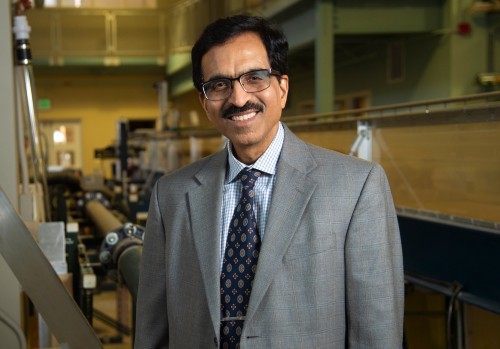Message from the School Head, "G.S." Govindaraju

There are countless themes from civil engineering that can be applied to everyday life — but, for last year, there is one that speaks loudest to me: resiliency.
For civil engineers, resiliency is ingrained in us and in all we do. It ensures the projects we work on stand both the test of time and any unexpected calamities. It is also a vital, personal quality for a civil engineer. We must always be ready and able to adapt to change — and we must not lose sight of our goals in the face of adversity.
I cannot think of a time in my life where so many at once have been asked to demonstrate this quality than this past year.
It is no exaggeration to say that for many of us, 2020 was one of the most challenging years of our lifetime. The COVID-19 pandemic dramatically altered the lives of practically everyone around the world and has affected just about every facet of our daily routines. From the tragic loss of loved ones to our countries coming to complete standstills, the coronavirus was — and continues to be — at the very forefront of our consciousnesses.
That said, I am confident that this era of strife and uncertainty will come to pass. But it will require the collective resiliency and cooperation of us all to make it happen — and I am proud to say I have seen firsthand just how resilient we can be these past several months, both at Purdue University and within the Lyles School of Civil Engineering.
Over the course of spring break 2020, our faculty and staff worked tirelessly to convert our lesson plans to online platforms. Our students, too, showed tremendous adaptability as they switched from their familiar campus and classroom settings to the new normal.
Meanwhile, many of our faculty conducted new research in response to the coronavirus. Their research has covered the pandemic from many angles, including the effects and spread of the virus through ridesharing, studying UV radiation as a method of decontamination and the effect it has on stagnant water systems.
Then, this fall — after months of preparation and planning — campus reopened. This required the full participation of everyone to make it a success — and I am proud to say we have shown incredible resilience and have managed to do what many other universities could not.
This past semester, our students, faculty and staff have proven that campuses can reopen — provided everyone buys in to the plan and does their part.
While we cannot control the unexpected, we can work together, be resilient and come out of this stronger than ever. And I am confident we will continue to demonstrate these admirable qualities at Purdue in the years to come.
All the best,
Rao S. Govindaraju
Bowen Engineering Head of Civil Engineering
and Christopher B. and Susan S. Burke Professor of Civil Engineering
